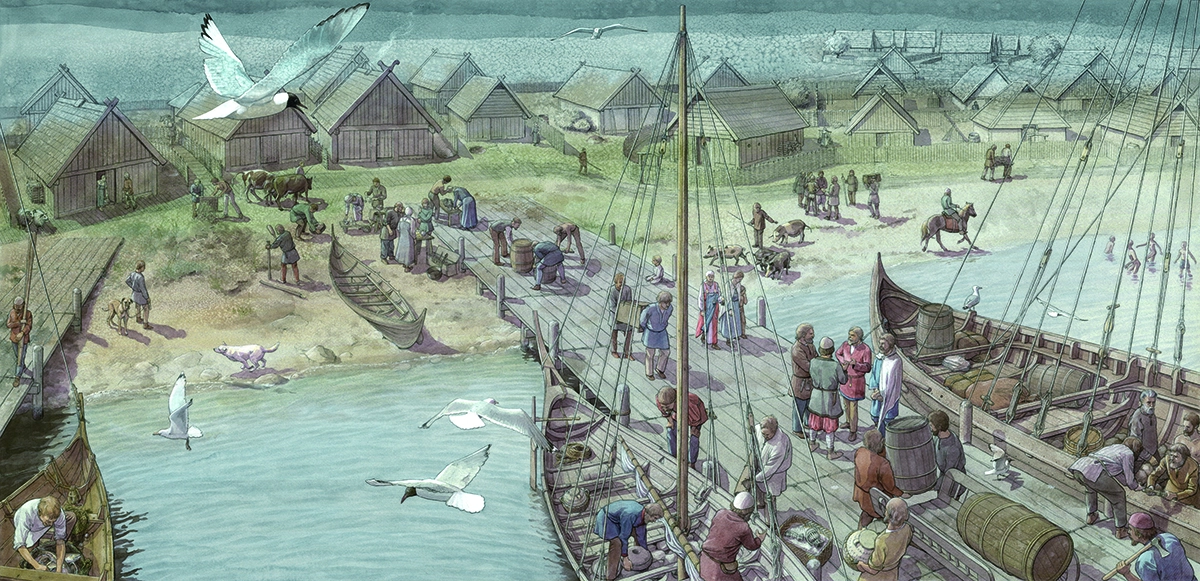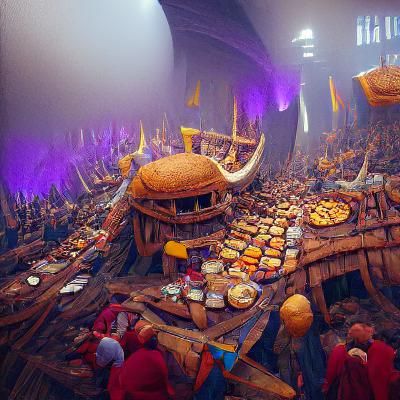The Vikings were skilled metalworkers who made a variety of items, including weapons, tools, and jewelry. Their jewelry was highly prized and often worn as a symbol of status and wealth. In this blog post, we'll take a closer look at how the Vikings found metals, what metals they used for jewelry making, and the techniques they used to create their intricate and beautiful designs.

Finding Metals
The Vikings obtained metals through a variety of means, including mining, trade, and raiding. Scandinavia was rich in iron, copper, and silver, which were all commonly used in Viking metalwork. Iron was the most abundant metal and was used for making tools, weapons, and household items. Copper was used for making jewelry and other decorative objects, while silver was highly prized for its beauty and rarity.
In addition to mining, the Vikings also obtained metals through trade with other cultures. They would often trade furs, slaves, and other goods for valuable metals like silver, which they used to make jewelry and other luxury items.

Metalworking Techniques
Once the Vikings had obtained their metals, they used a variety of techniques to turn them into beautiful pieces of jewelry. The most common technique used by the Vikings was the "lost-wax" method, which involves creating a wax mold of the design and then casting the metal into the mold. This allowed the Vikings to create intricate and detailed designs, such as those seen on Viking brooches and pendants.
The Vikings also used other techniques such as engraving, filigree, and inlay to create their jewelry. Engraving involved carving designs into the metal using a sharp tool, while filigree involved twisting and bending thin wires of metal to create delicate patterns. Inlay involved setting stones or other materials into the metal to create a contrasting color or texture.
Metals Used in Viking Jewelry
The Vikings used a variety of metals for their jewelry, including silver, copper, and bronze. Silver was the most highly prized metal and was often used to create intricate designs on brooches, pendants, and other jewelry. Copper was also commonly used for jewelry, and was often mixed with silver to create a contrasting color or texture. Bronze was used for making buckles, belt fittings, and other decorative objects.
Conclusion
The Vikings were skilled metalworkers who used a variety of techniques to create beautiful and intricate pieces of jewelry. By finding and mining metals like silver, copper, and iron, and applying techniques such as the lost-wax method and engraving, the Vikings were able to create jewelry that was highly prized for its beauty and craftsmanship. Today, Viking jewelry remains a symbol of the rich cultural heritage of the Viking people, and continues to inspire designers and craftspeople around the world.
Sources:
- Graham-Campbell, James, and David M. Wilson. The Viking World. Routledge, 2013.
- Munch, Peter Andreas. Norse Mythology: Legends of Gods and Heroes. Dover Publications, 1999.
- Price, Neil. The Viking World. Routledge, 2008.
- Vike, Vegard. "Jewelry in the Viking Age." The Viking Age Archive, 2018.





Leave a comment
This site is protected by hCaptcha and the hCaptcha Privacy Policy and Terms of Service apply.